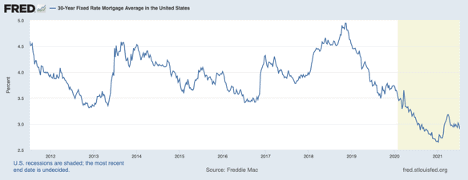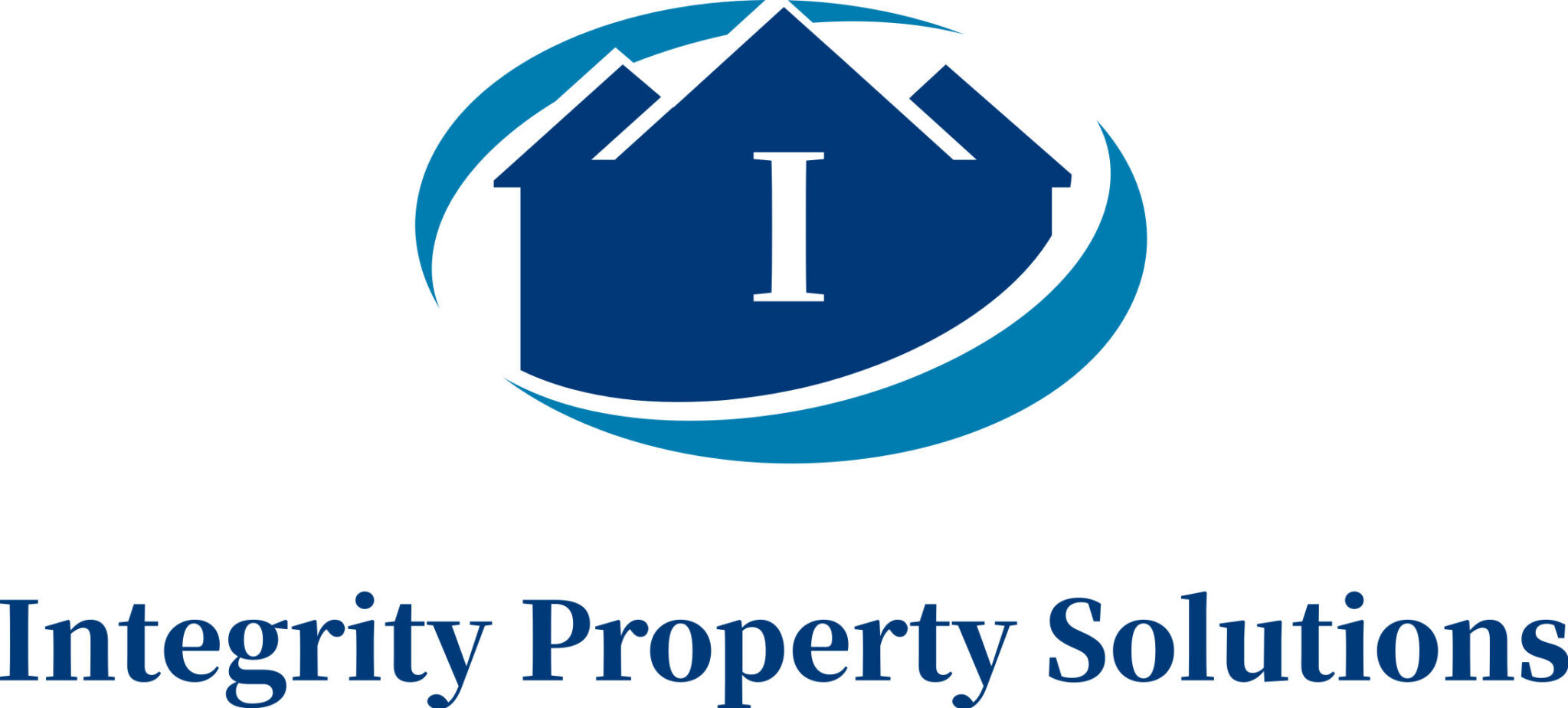By Dave Meyer
Originally published July 26, 2021 on http://BiggerPockets.com
Although interest rates remain near historic lows, it’s important not to lose sight of how these low interest rates impact housing prices—especially as inflation threatens sooner-than-expected rate hikes.
For the last several months, the Consumer Price Index (CPI), one of the main measurements of interest, has been above the Fed’s target rate of 2% year-over-year inflation (most recently around 5%). While some signs indicate this inflation is temporary, it’s something to monitor. Rising inflation has broad implications for both property prices and real estate investors.
When inflation rises, the government usually wants to stop it. The government’s primary tool to battle inflation is raised interest rates, which works by reducing the supply of money in the economy. And while this tactic tends to work at managing inflation, rising interest rates can slow or perhaps even reserve gains in property prices.
How interest rates impact affordability
First and foremost, interest rates impact the affordability of mortgages.
When interest rates are low, it is less expensive for people to borrow money. Interest rates are essentially a measurement of how much a borrower pays a lender to borrow money. The lower the interest rate, the less the borrower pays the lender over the course of the loan. This is generally good! No one wants to pay a lender or bank a cent more than they must (sorry, lenders).
But the savings borrowers enjoy due to low interest rates can also drive up property values because low interest rates increase housing affordability. When borrowers pay the bank less, they can afford more expensive homes.
Let’s look at an example.
Julia has a budget of $120,000 for a down payment and wants to keep the payments for principal and interest (P&I) on her mortgage around $1,900 per month.
A few years ago, when interest rates averaged around 5%, Julia would have maxed out at a property that cost around $425,000. For that price, Julia would put down $85,000 (assuming a 20% down payment), and the P&I on her $340,000 mortgage ($425,000 – $85,000) would come out to $1,825.
But now, mortgages are hovering around 3%, which means Julia can afford a $550,000 house. A down payment would cost her $110,000, and even though her loan would now be for $440,000 ($550,000 – $110,000) her payments would be $1,855.
Payment on $440,000 loan at 3% = $1,855
Payment on $340,000 loan at 5% = $1,825
Just because interest rates dropped from 5% to 3%, Julia can now afford a property that is $125,000 more expensive than the property she could afford a few years ago! That’s a huge difference in price range.
Does affordability affect the housing market?
Rising affordability doesn’t necessarily drive housing all by itself. Still, when you combine increased affordability with the historically low housing inventory we’re currently seeing, it’s a perfect scenario for prices to climb.
People want houses, and there aren’t a lot to buy. Rather than pocketing the savings from low interest rates, many borrowers who intend to buy choose to use the money they’re saving on interest to bid up the price of the house. Hence all the bidding wars.
Returning to our earlier example, if Julia were looking at a home that cost $450,000, we know from our calculations above that she can afford a house up to $550,000—so she can drive the cost of that house all the way up from $450,000 to $550,000 and still stay within her budget.
Think about that for a second. Interest rates dropping from 5% to 3% means a single person can drive up the price of a house by $100,000 (22%!) without changing her budget.
Of course, this is just one extreme example. But in aggregate, this increased affordability can—and often does—drive up prices across the entire housing market.
In contrast, if interest rates climb and affordability falls, it has the potential to slow down or even reverse gains in property prices. It doesn’t always happen that way, but mortgage affordability can significantly impact property properties.
How interest rates affect risk assessment
In addition to affordability, there is a more mathematical way that interest rates impact housing prices that is particularly relevant to real estate investors.
Most investors choose to value real estate by the income the property generates, as it enables investors to measure their return on investment. Typically, a metric known as cap rate is used for this exercise.
Cap rate is easy to calculate. You simply divide the net operating income (NOI) of a property by the property’s market value. For example, if you had an NOI of $50,000 and a property worth $1,000,000, the cap rate is 5%.
When you’re trying to figure out the value of a property, you can use the inverse of this formula. Simply divide the NOI by the average cap rate in your area.
As an example, if you toured a property with $30,000 in NOI and the cap rate for similar properties is 7%, you’d likely want to pay around $429,000 ($30,000/.07).
Generally, sellers like a low cap rate and buyers like the opposite—they want to buy at a higher cap rate.
The cap rate in your area is fluid, though. No one sits down and sets what the cap rate will be for multifamily properties in Atlanta. Instead, it is a product of the free market.
Sometimes a bullish investor may be willing to buy at a relatively low 3-4% cap rate. Other times, investors may demand a 10% cap rate or higher for their investment. It all depends on the risk/reward profile of a particular investment and the macroeconomic climate.
Right now, cap rates tend to be low. With low interest rates, investors have lower expenses because they’re paying less to their lenders. With lower expenses comes lower risk. This (combined with various other economic factors we won’t get into here) can embolden investors to buy at a lower cap rate.
But, when interest rates start to rise, cap rates usually follow. As an investor, when interest rates rise, it means your expenses go up. With rising expenses comes rising risk. And with more risk, investors must demand better prospects of return in the form of higher cap rates.
But here’s the catch: higher cap rates lower property value. This should be evident from the formulas we reviewed above.
Remember that property with $30,000 in NOI we were considering? At a 7% cap rate, the property was estimated to be worth $429,000 ($30,000/.07). But, at an 8% cap rate, that same property is worth about $375,000 ($30,000/.08). When investors demand higher cap rates (often due to rising interest rates), they reduce property values.
This isn’t necessarily good or bad. Owners and sellers could see a decline or even reversal of price appreciation, which is never fun. But on the other hand, many buyers will likely welcome lower property values even if financing is more expensive. Either way, it’s an important dynamic to monitor over the coming months.
While fluctuations in interest rates do have the potential to affect property prices, it’s still unclear what will happen in today’s market.
When rates change gradually, it does not always correspond with a big shift in market dynamics.

Interest rates rose from 2016-2019, for example, and property prices rose steadily during that time. So, if interest rates do start to rise, it’s not necessarily going to cause declining prices or any sort of crash.
My best guess is that rates will start to rise in the coming months, but it will happen gradually. This should lead to cooling of the housing market back down to normal growth rates (think 4-8% year-over-year growth instead of 22%), but we won’t see a reversal in property prices, at least in the next year or so.
To me, it would take a rapid rise in interest rates with a corresponding drop in demand or a huge glut of inventory for prices to reverse, and personally, I don’t see that happening soon.
